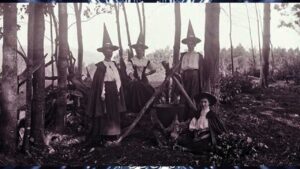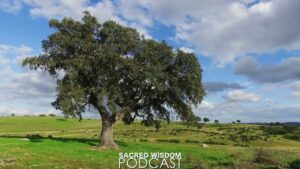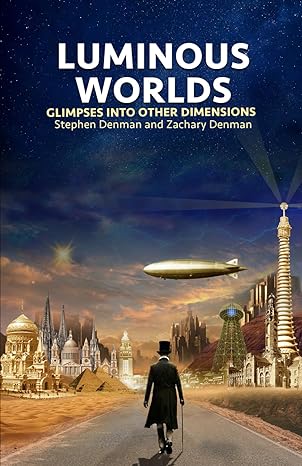European Witchcraft | Magicians Wizards Druids Witches Enchanters Warlocks
When it comes Witchcraft and Ceremonial Magic, it actually was Ireland that became the initial location from where somany of the ritual practices emerged. Within the Irish Gaelic, the Cailleach (Witch) was revered by the Celtic Tribes. Across the landscapes of Ireland, the gatherings of Cailleacha (Witches), once held tremendous respect among the Druids and the Celtic Tribes. However, those men from the Celtic Tribes of Ireland who became involved with such practices, were called a Fírinpasadóir (Truth Imposter) and plurally as Fírinpasadóiri (Truth Imposters). For the Celtic Tribes, the Warlocks represented neg atively based connotations. Over many generations each Warlock likewise became defined as the Fírincaimiléir (Truth Cheater), and collectively defined as the Fírincaimiléiri (Truth Cheaters). Therefore, why did the women that became Witches become so despised and fear during the Medieval Period, when they had originally been revered and respected? Additionally, the same cultural perspectives occurred among the Celtic Britons who eventually became the Welsh Cymric Tribes. In the Welsh Cymric, there was the Gwrach (Witch), that collectively became defined as the Gwrachod (Witches).
atively based connotations. Over many generations each Warlock likewise became defined as the Fírincaimiléir (Truth Cheater), and collectively defined as the Fírincaimiléiri (Truth Cheaters). Therefore, why did the women that became Witches become so despised and fear during the Medieval Period, when they had originally been revered and respected? Additionally, the same cultural perspectives occurred among the Celtic Britons who eventually became the Welsh Cymric Tribes. In the Welsh Cymric, there was the Gwrach (Witch), that collectively became defined as the Gwrachod (Witches).
Warlocks that resided within Ireland, the Celtic Britons defined each of them as the Bradwr or Betrayer
Just as with the cultural perspective of the Warlocks that resided within Ireland, the Celtic Britons defined each of them as the Bradwr (Betrayer), and collectively named them Bradwyr (Betrayers). Specific distinctions were made however, and both the Celtic Tribes of Ireland and the Celtic Britons, discernibly conveyed these differences. For example, the Celtic Tribes within Ireland defined a man who had become a Draoi (Wizard), alongside the other Draoithe (Wizards), as likeable. Alongside this fact, the various Celtic Britons define a man of such practices with the word Dewin (Wizard), and knew there were numerous Dewiniaid (Wizards). Many of the Celtic Britons, knew that certain ritual practices and customs which the Wizards consistently used, were comparable to those of each man who had become a Derwydd (Truth Servant) or Druid, held spiritual rulership and potency among other supernally related Derwyddon (Truth Servants) or Druids.
Witchcraft had once been entirely based on learned and highly technical practices
This is why from knowing these historical facts, the practices which became defined in the Old English Language as Wiċċecreft (Wizardry Power) or Witchcraft, had once been accepted, but then became despised and ridiculed. This meant the Divine Matriarchy which had been so well represented by women in the rituals and practices of Witchcraft, diminished in obscurity. We must remember that in the Low German, such rituals and practices were known as Wikkekraft (Diviner Might) and Wickekraft (Diviner Might), or Witchcraft. Further to this, in the Old High German, the very same rituals and practices became defined as Wikkechraft (Diviner Might) and Wickechraft (Diviner Might). Lastly, the same definition was originally written as Vǫlvakraptr (Diviner Strength) and Völvakraptr (Diviner Strength), to summarise the routines of Witchcraft. Hence, these etymologies confirm that for the Germanic Tribes, Norse Tribes, Celtic Tribes within Ireland, and for the Celtic Britons, everything about Witchcraft had once been entirely based on learned and highly technical practices.
Join the Members section to access more exclusive content with courses, videos and forums to discuss various topics.
Click here to Join
Rituals of Witches effectively utilised kinds of Ceremonial Magic
For much of the Early Medieval Period, the elected Popes and College of Bishops within the Roman Catholic Church (RCC), and the Vatican City State of Rome within Central Italy, tolerated every aspect of Paganism. However, after the devastation of the Bubonic Plague, which lasted in Mainland Europe from the 15 August 1347 to the 28 October 1353,  an intense anxiety became prevalent within the minds of European Christians, as they believed it was the Pagans and the Airetikoí, Αιρετικοί (Choosers) or Heretics, who had tainted communities with their Ceremonial Magic. What followed was therefore over 300 years of persecution toward anyone practicing Ceremonial Magic and Western Mysticism. Over a duration of around 4,600 years, the different rituals and practices of Witchcraft became fully accepted in the rural locations such as the Leinster Province and Connaught Province of Ireland, the Mercia Kingdom and Wessex Kingdom in Britain, Mainland Europe and throughout the Asian Continent. Hence, as the rituals of Witches effectively utilised kinds of Ceremonial Magic, they were the inheritors of the Occult Technology from the Atlantean Continent. Watch Full Video on YouTube
an intense anxiety became prevalent within the minds of European Christians, as they believed it was the Pagans and the Airetikoí, Αιρετικοί (Choosers) or Heretics, who had tainted communities with their Ceremonial Magic. What followed was therefore over 300 years of persecution toward anyone practicing Ceremonial Magic and Western Mysticism. Over a duration of around 4,600 years, the different rituals and practices of Witchcraft became fully accepted in the rural locations such as the Leinster Province and Connaught Province of Ireland, the Mercia Kingdom and Wessex Kingdom in Britain, Mainland Europe and throughout the Asian Continent. Hence, as the rituals of Witches effectively utilised kinds of Ceremonial Magic, they were the inheritors of the Occult Technology from the Atlantean Continent. Watch Full Video on YouTube



